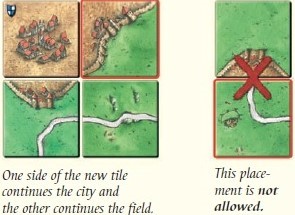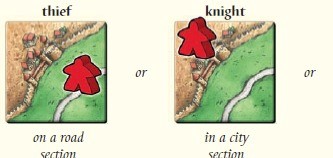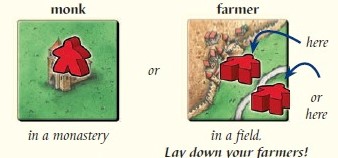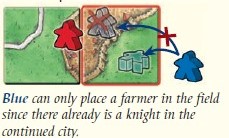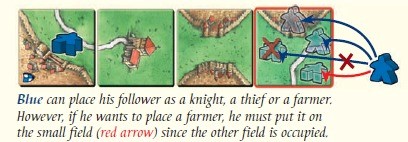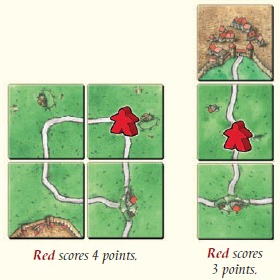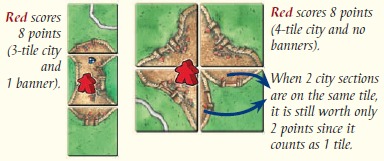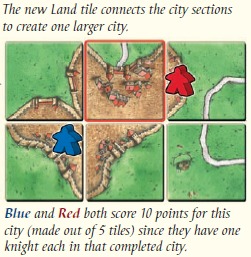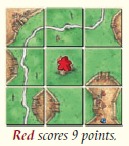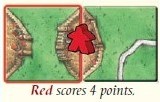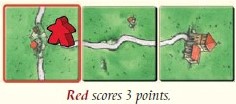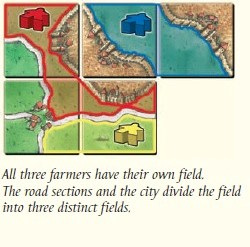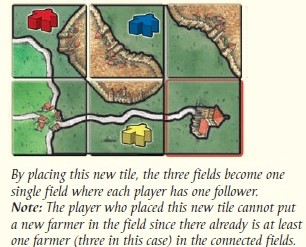
A tile laying game for 2 to 5 players, by Klaus-Jürgen Wrede. Ages 8 and up.
Game components
- 72 Land tiles (including 1 Start tile with a darker back) showing roads, cities, fields, and
monasteries. The 12 River tiles are not part of the basic game but have the same back as the
Start tile.
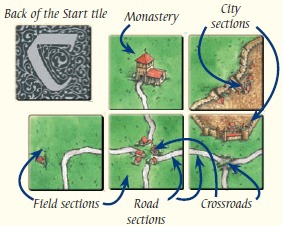
- 40 followers in 5 colors:
 Each follower can become a thief, a knight, a monk, or a farmer.
Each player will use one of their followers as a score marker.
Each follower can become a thief, a knight, a monk, or a farmer.
Each player will use one of their followers as a score marker.
- 1 scoreboard: To track the players' scores.
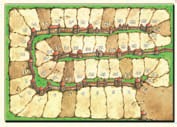
- 1 rulebook and 1 player aid
Game overview
On their turn, players place one tile. This is how roads, cities, monasteries and fields will be created, one tile at a time. To score points, players will need to place followers on these tiles. Points are scored throughout the game and at the end of the game. After the final scoring, the player who scored the most points is the winner.
Game setup
The Start tile is placed face-up in the center of the table. Shuffle the other tiles and place them in various face-down stacks to allow easy access for every player. Place the scoreboard close to the edge of the table to give players enough room to play their tiles in the middle of the table. Each player takes the 8 followers of his color and puts one (called marker thereafter) on the space numbered 0 of the scoreboard (it is the space located in the lower right-hand corner). Each player then keeps their remaining 7 followers in front of themselves: this is their personal supply. Players choose how the first player is designated, or simply let the youngest player begin.
Game End
When a player places the last tile, the game ends after his turn. Then, players proceed with the final scoring.
Final Scoring
Scoring incomplete cities, roads or monasteries
During the final scoring, incomplete roads, cities or monasteries are scored. A player who has a follower on an incomplete road, city or monastery scores 1 point per tile. For cities, each banner is also worth only 1 point. In case of a tie, use the same rules as for completed features. Once a feature is scored, return the follower to its supply. This should prevent any potential mistakes during the final scoring.
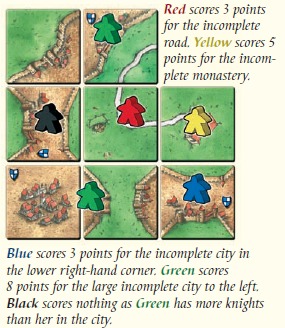
Scoring Farmers
- When scoring the farmers, only completed cities are counted.
- The farmer must be in a field that touches one or more completed cities. The distance between the farmer and the city does not matter.
- For each city that the field touches, the player with the most farmers in that field scores 3 points. The size of the city does not matter. If some players are tied for the most farmers, they each score the points for that field.
- A field is only worth points if it touches at least one completed city. More than one field may touch and score the same city. Each field is scored by following the rules below.
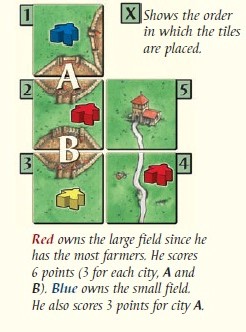
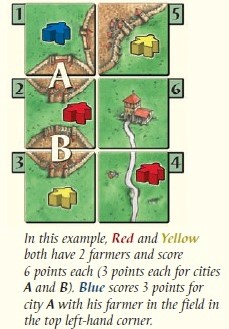
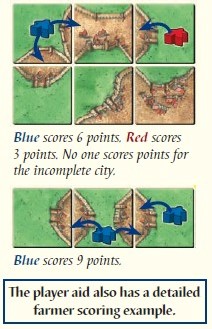
Once all the fields have been scored, the final scoring and the game are over.
The player with the most points is the winner. In case of a tie, play another game to determine the winner!
Scoring Summary
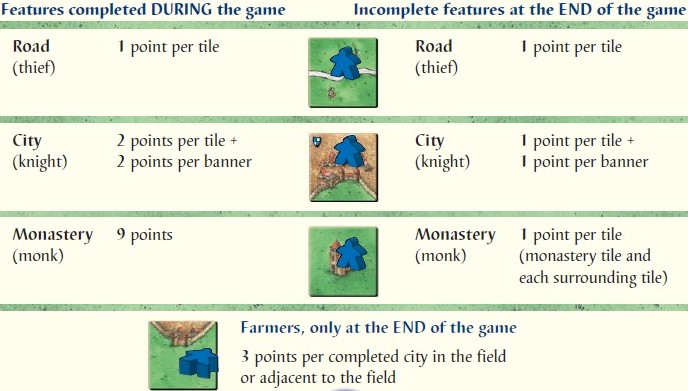
More examples for scoring farmers
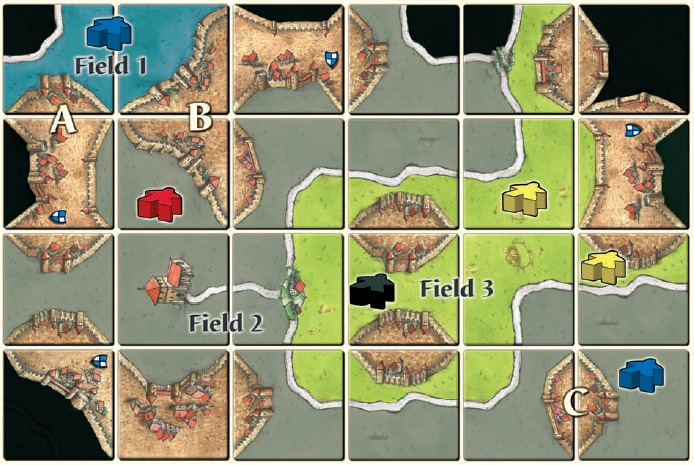
- Field 1: Blue is alone in Field 1. This field touches 2 completed cities (A and B). Blue scores 3 points for each city (no matter the size), for a total of 6 points.
- Field 2: Red and Blue both have 1 farmer in Field 2. Both players score 3 points per completed city (of which there are three: A, B and C). Thus, Red and Blue both score a total of 9 points for Field 2. Note: Cities A and B touch both Field 1 and Field 2. As such, for these cities, Blue gains points in Field 1 and both Red and Blue score points in Field 2. The city in the lower left-hand corner is incomplete and is not worth any points.
- Field 3: Yellow is the sole player to score Field 3 since he has more followers than Black. There are 4 completed cities touching Field 3, so Yellow scores 12 points. Note about field demarcations: Fields are separated from one another by roads and cities as well as the edge of the board.
How can more than one follower occupy the same field?
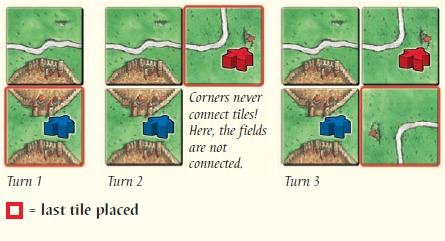
- Turn 1: Blue puts a farmer in the field.
- Turn 2: Red places a tile diagonally adjacent to the one that Blue has just placed. Red can put his farmer in the illustrated field since both fields are not connected at that time.
- Turn 3: The two fields are now combined into a larger field. There are now two farmers in the same field.
- Using similar tactics, it is possible for two thieves to be on the same road or two knights to be in the same city.

